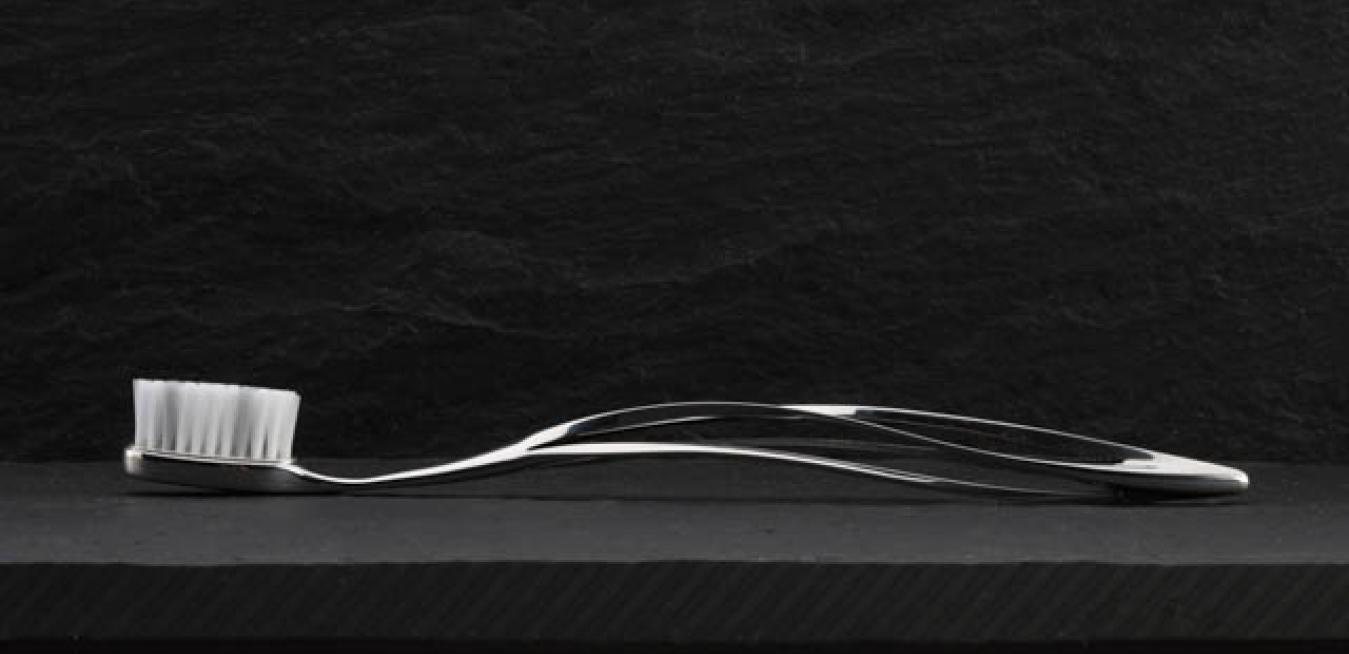Andrea Pasquali has 3D printed products as big as a working car engine and as small as a set of dentures. Pasquali is the co-owner Zare, an Italian company focusing on additive manufacturing, a catchall term that includes 3D printing. In 2015, he was curious to see what kind of consumer luxury goods he could create using his industrial-strength 3D printers. He invited Christoph Nussbaumer, an Austrian designer known for creating ergonomic sports equipment such as skis and helmets, to mull over the options with him. “We assessed possible products, such as bicycles, lamps and jewelry,” Nussbaumer says.
What they settled on was MIO, the world’s first 3D-printed metal toothbrush. Nussbaumer designed the MIO, named after the Italian word for “my own,” after working with dentists to determine the most comfortable hold possible, and to make sure it met dental hygiene standards. “[It] is not your typical status symbol,” Nussbaumer concedes. But it fits perfectly into Pasquali’s vision: showcasing the capabilities of 3D printing by transforming everyday objects into luxury items.
The humble toothbrush might seem like an odd choice, but it is making a bigger point. 3D printing is already being used to produce complex parts for jet engines, gas turbines, and other industrial machines, or for specialized applications like making bespoke 3D printed skull fragments. The toothbrush literally brings home the idea of a future full of personalized objects, albeit available at a much lower price.
Top: Italian additive-manufacturing company Zare is betting consumers will put their money where their mouths are by buying its 3D-printed toothbrushes. Above: Zare makes the toothbrushes, available in titanium or stainless steel, using 3D printers from Concept Laser, in which GE bought a majority stake last year. Images credit: Zare
The MIO won’t get your teeth cleaner than your average drugstore toothbrush, but as with many luxury items, that’s not the point. Pasquali and Nussbaumer expect that people will pay as much as 1,500 euros for the thrill of owning one.
Printed from titanium or stainless steel, the toothbrush pays homage to one of Italy’s most famous designs — the Ferrari sports car. Users can choose between two designs that are customized for left- or right-handed brushers, and they can specify whether they want a polished, matte or galvanized finish.
Zare prints the toothbrush by fusing together thin layers of powdered metal with a high-energy laser inside a 3D printer. The printer, made by Concept Laser, prints the customized toothbrushes directly from a computer file. “Additive manufacturing gives designer freedom at virtually no cost,” Nussbaumer says.
The benefits are not lost on companies like GE, which bought a majority stake in Concept Laser last year. GE businesses already use 3D printing to make parts for jet engines, gas turbines and other industrial machines.
Pasquali will soon find out whether consumers are as intrigued by his concept as he is. While the company hopes to generate a new revenue stream from its first branded consumer product, there’s more to gain here than just money. MIO has the potential to become an ambassador for 3D printing, demonstrating its vast capabilities to the consumer-goods industry.
And, finally, the lowly toothbrush will gain the status it deserves.
This article was originally published on GE Reports.
